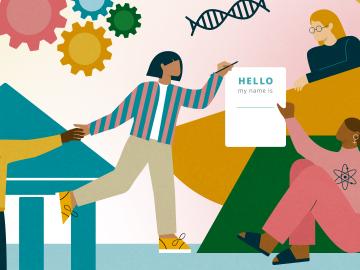
Filter News
Area of Research
- Advanced Manufacturing (13)
- Biological Systems (1)
- Biology and Environment (41)
- Building Technologies (2)
- Clean Energy (129)
- Climate and Environmental Systems (2)
- Computational Biology (1)
- Computational Engineering (3)
- Computer Science (12)
- Electricity and Smart Grid (1)
- Fusion and Fission (14)
- Fusion Energy (7)
- Isotopes (12)
- Materials (70)
- Materials for Computing (18)
- Mathematics (1)
- National Security (12)
- Neutron Science (39)
- Nuclear Science and Technology (12)
- Quantum information Science (6)
- Sensors and Controls (1)
- Supercomputing (52)
- Transportation Systems (2)
Date
News Topics
- 3-D Printing/Advanced Manufacturing (41)
- Advanced Reactors (9)
- Artificial Intelligence (19)
- Big Data (12)
- Bioenergy (22)
- Biology (23)
- Biomedical (15)
- Biotechnology (6)
- Buildings (13)
- Chemical Sciences (7)
- Clean Water (13)
- Climate Change (11)
- Composites (8)
- Computer Science (65)
- Coronavirus (10)
- Critical Materials (4)
- Cybersecurity (10)
- Decarbonization (7)
- Energy Storage (30)
- Environment (58)
- Exascale Computing (4)
- Frontier (6)
- Fusion (13)
- Grid (16)
- High-Performance Computing (19)
- Isotopes (13)
- ITER (4)
- Machine Learning (6)
- Materials (32)
- Materials Science (42)
- Mathematics (1)
- Mercury (4)
- Microscopy (15)
- Molten Salt (1)
- Nanotechnology (16)
- National Security (7)
- Net Zero (1)
- Neutron Science (36)
- Nuclear Energy (23)
- Physics (9)
- Polymers (7)
- Quantum Computing (5)
- Quantum Science (22)
- Security (5)
- Space Exploration (8)
- Statistics (1)
- Summit (18)
- Sustainable Energy (43)
- Transportation (33)
Media Contacts

To minimize potential damage from underground oil and gas leaks, Oak Ridge National Laboratory is co-developing a quantum sensing system to detect pipeline leaks more quickly.

A research team at Oak Ridge National Laboratory have 3D printed a thermal protection shield, or TPS, for a capsule that will launch with the Cygnus cargo spacecraft as part of the supply mission to the International Space Station.

Oak Ridge National Laboratory researchers have developed a new catalyst for converting ethanol into C3+ olefins – the chemical

Scientists at Oak Ridge National Laboratory added new plant data to a computer model that simulates Arctic ecosystems, enabling it to better predict how vegetation in rapidly warming northern environments may respond to climate change.

An Oak Ridge National Laboratory researcher has invented a version of an isotope-separating device that can withstand extreme environments, including radiation and chemical solvents.

Researchers working with Oak Ridge National Laboratory developed a new method to observe how proteins, at the single-molecule level, bind with other molecules and more accurately pinpoint certain molecular behavior in complex

As a metabolic engineer at Oak Ridge National Laboratory, Adam Guss modifies microbes to perform the diverse processes needed to make sustainable biofuels and bioproducts.

Long before COVID-19’s rapid transmission led to a worldwide pandemic, Oak Ridge National Laboratory’s Jason DeGraw was performing computer modeling to better understand the impact of virus-laden droplets on indoor air quality

David Sholl has come to the U.S. Department of Energy’s Oak Ridge National Laboratory with a wealth of scientific expertise and a personal mission: hasten the development and deployment of decarbonization solutions for the nation’s energy system.

ORNL is among seventeen U.S. national laboratories and many prominent publishers, journals and other organizations in scientific publishing that announced today the beginning of a partnership to support name change requests from researchers on past published papers.


